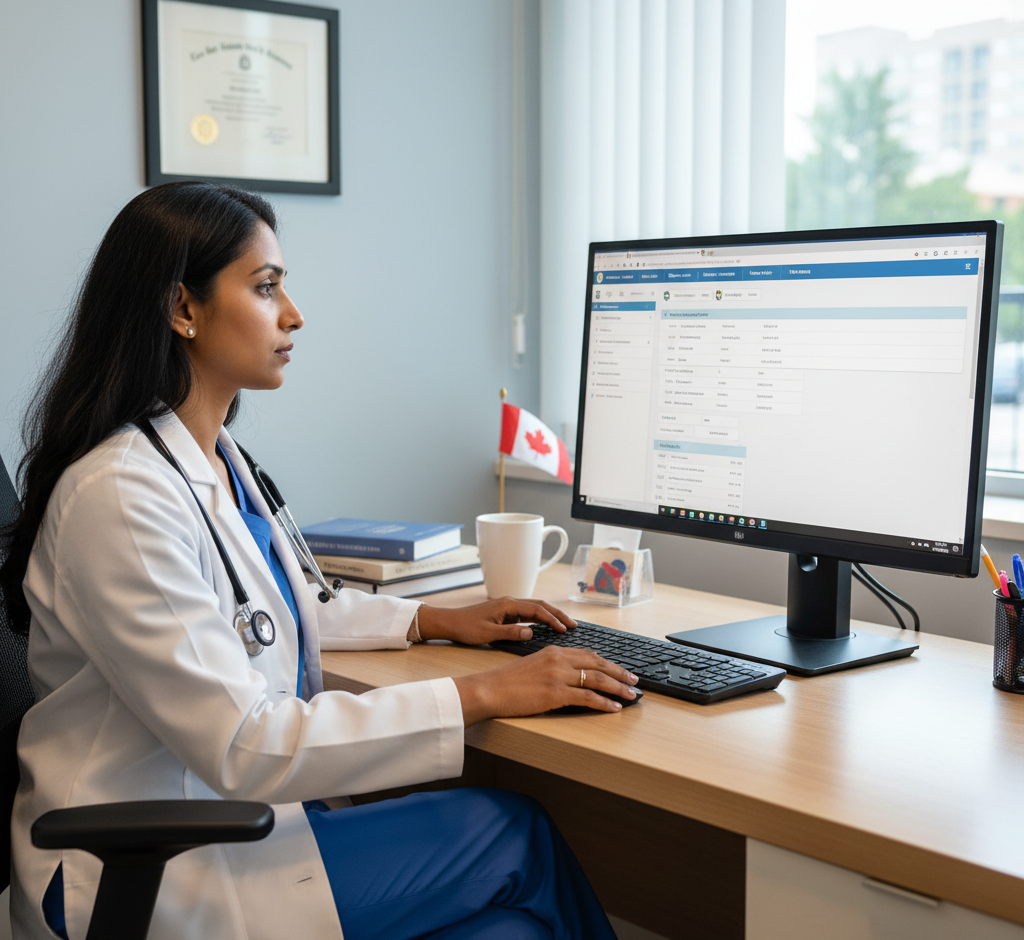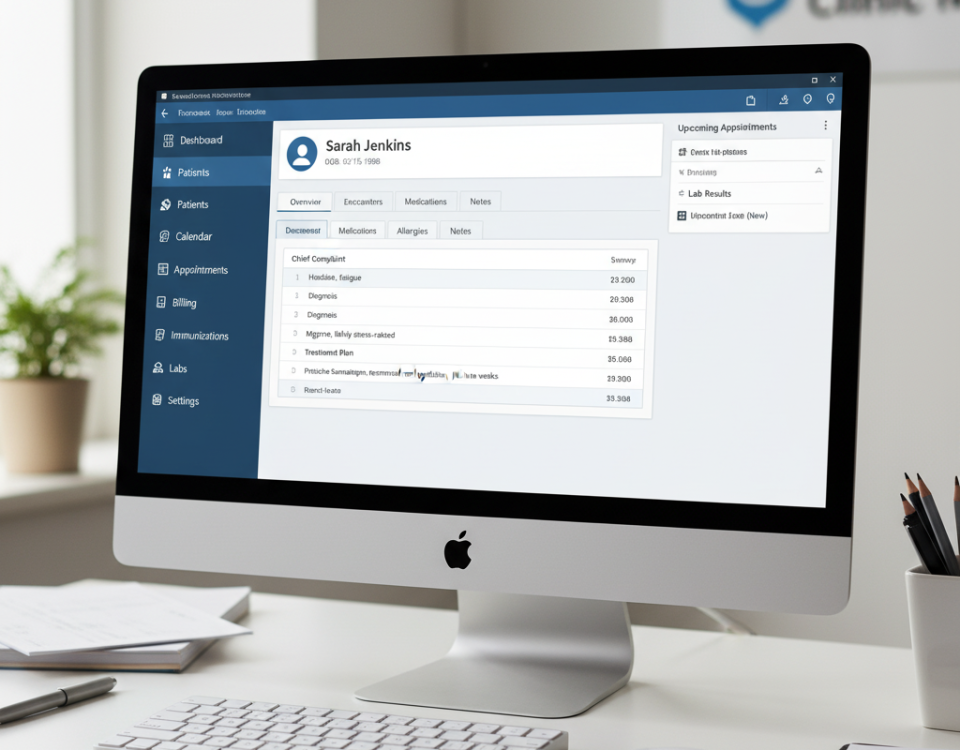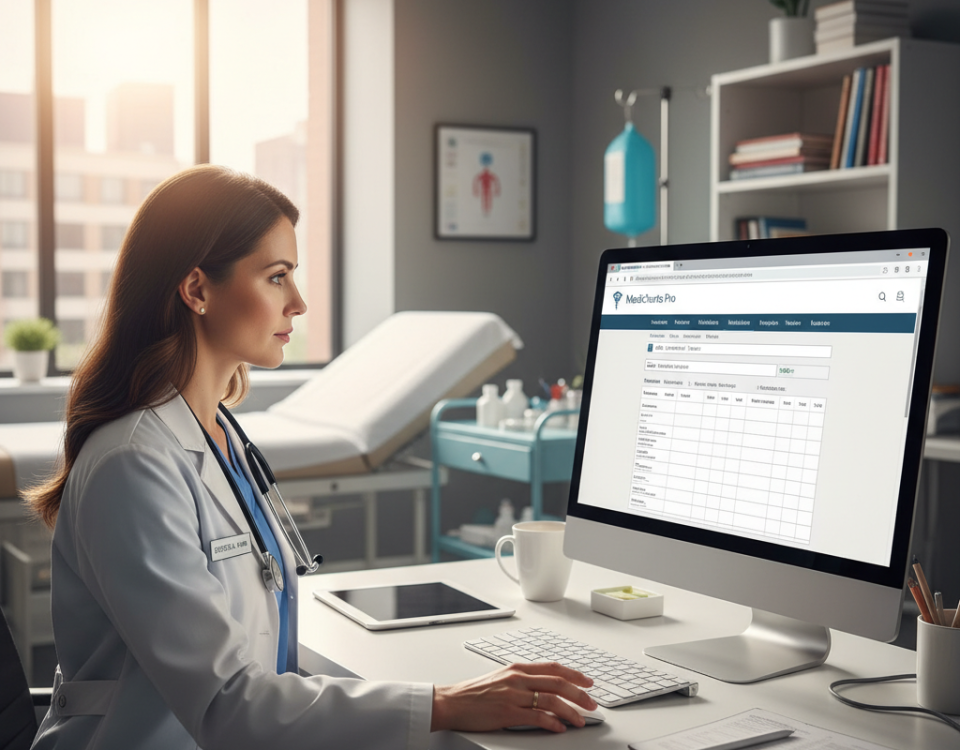- Home
- About Us
- EMR Features
-
-
- EMR Features
-
- Patient Health Features
-
- Clinic Features
-
-
- Specialties
-
- Blog
- Contact Us
8 Questions to Ask Before Buying an EMR in Ontario

Selecting the right EMR software in Ontario is one of the most important decisions a clinic can make. Patient records, billing, scheduling, and compliance all tie into a single system that directly impacts day-to-day operations and long-term clinic performance. The challenge lies in finding an EMR that not only meets current needs but also adapts to future demands.
Ontario’s healthcare environment is unique, shaped by OHIP billing, MCEDT requirements, and provincial regulations. Clinics must weigh these factors carefully before making an investment. To make the process easier, here are eight key questions every clinic should ask when evaluating EMR systems in Ontario.
1. Does the EMR Support OHIP Billing and MCEDT Integration?
Billing is one of the most time-consuming aspects of running a clinic, and in Ontario, it revolves around OHIP and MCEDT. An EMR that integrates directly with the Medical Claims Electronic Data Transfer system ensures smoother workflows and faster payments.
Without this functionality, staff spend unnecessary hours manually entering claims, reconciling rejections, or fixing errors. The best systems automatically generate claims from clinical encounters, validate codes before submission, and track claim status. When EMR software includes this level of billing support, clinics gain reliable cash flow and reduce administrative stress.
2. Is the EMR Compliant with Ontario Healthcare Regulations?
Compliance cannot be an afterthought. Ontario providers must meet strict standards under the Personal Health Information Protection Act (PHIPA) to safeguard patient privacy and data security. Non-compliance risks penalties, reputational damage, and delayed payments.
When choosing an EMR provider in Ontario, it’s important to confirm that the system adheres to PHIPA standards, encrypts patient information, and keeps audit trails for accountability. A compliant EMR protects clinics and ensures long-term peace of mind.
3. Can the EMR Adapt to Multi-Provider and Multi-Specialty Clinics?
Ontario clinics are diverse—ranging from single-provider practices to large multi-specialty groups. A one-size-fits-all system rarely meets every clinic’s needs.
Strong EMR systems offer customization, specialty-specific templates, and the ability to scale as a clinic grows. For instance, dermatology clinics may need photo documentation features, while psychiatry practices may prioritize recurring scheduling tools. Role-based access ensures each provider sees only the information relevant to their specialty, creating a tailored and efficient experience.
4. How Does the EMR Handle Patient Engagement?
Today’s patients expect digital convenience. An EMR that supports patient engagement helps clinics meet this demand while improving outcomes.
Features to look for include:
- Secure two-way messaging for patient communication
- Online scheduling that reduces call volumes
- Automated reminders to minimize no-shows
- Patient portals with access to health records and lab results
When EMR software includes engagement tools, it strengthens relationships between clinics and patients while reducing administrative overhead.
5. Is the EMR Easy for Staff and Providers to Use?
A system packed with features means little if staff struggle to use it. Usability is one of the most important factors in choosing an EMR system in Ontario.
User-friendly EMRs feature intuitive dashboards, simple scheduling tools, and clean interfaces that reduce training time. Providers can document visits quickly without clicking through endless menus. Staff can process billing and scheduling with minimal friction. An easy-to-use EMR ensures adoption across the clinic and keeps workflows running smoothly.
6. What Integration Options Does the EMR Offer?
Most clinics rely on more than one system. From lab reporting to diagnostic imaging, integrations matter. An EMR that doesn’t connect with external systems creates silos and duplicate work.
When evaluating an EMR provider in Ontario, ask about integration capabilities with labs, pharmacies, and diagnostic tools. Systems that connect seamlessly eliminate manual data transfers and improve accuracy. Clinics benefit from faster access to results and better continuity of care.
7. How Does the EMR Improve Clinical Workflows and Efficiency?
Efficiency goes beyond speed—it’s about simplifying everyday processes. An EMR should reduce redundant tasks and support providers in delivering better care.
Features that enhance workflows include:
- Automated charting templates that save time during documentation
- Built-in scheduling linked directly to billing codes
- Centralized dashboards for quick access to patient information
- Real-time reporting that supports clinical and administrative decision-making
When EMR systems focus on workflow efficiency, clinics can serve more patients without adding administrative burden.
8. What Ongoing Support and Updates Are Provided?
An EMR is not a one-time purchase. Ongoing support and updates are vital for keeping the system functional and compliant. Without reliable vendor support, even the best EMR can quickly become a liability.
A dependable EMR provider should offer:
- Responsive technical support for troubleshooting issues
- Training resources for new staff and providers
- Regular updates to reflect OHIP and MCEDT changes
- Scalable solutions that grow with the clinic’s needs
This ensures clinics stay compliant, efficient, and prepared for future healthcare demands.
Choosing the Right EMR in Ontario
Selecting an EMR is more than a software decision—it’s about building a foundation for clinical and financial success. By asking the right questions, clinics can identify systems that support OHIP billing, meet regulatory requirements, engage patients, and simplify daily workflows.
Alembico EMR delivers an Ontario-focused solution that integrates OHIP billing, MCEDT, scheduling, and patient engagement into one secure system. Designed for multi-provider and specialty clinics, it combines usability, compliance, and scalability in a single platform.
Book a demo with Alembico EMR today and see how the right EMR software can transform clinical operations.
Also read:
Is Your Current EMR System Holding You Back? Signs It’s Time to Upgrade
Tags: EMR software, EMR Solution, EMR systems in Ontario


